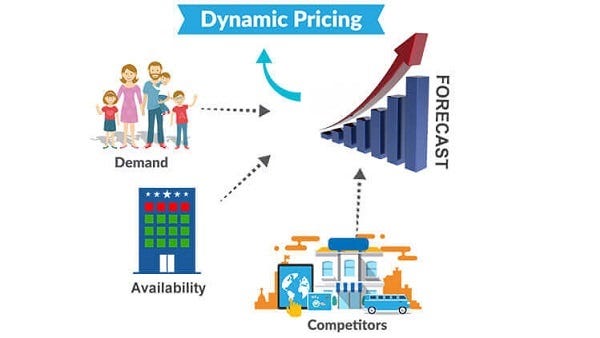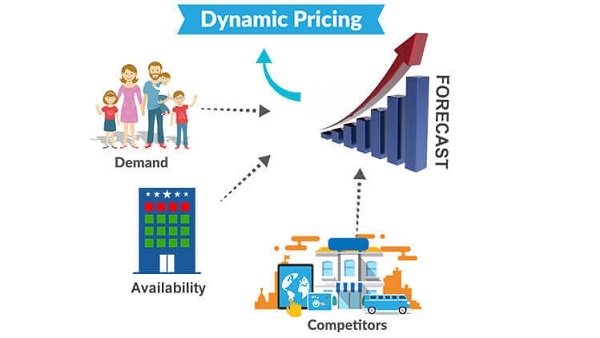In today’s competitive retail landscape, static pricing strategies are becoming increasingly outdated. Consumers have access to more information than ever before, allowing them to compare prices across retailers with a few clicks. To stay ahead, retailers need to embrace dynamic pricing, a data-driven approach that adjusts prices based on real-time market conditions.
What is Dynamic Pricing?
Dynamic pricing, also known as demand pricing, is a flexible pricing strategy that uses big data and analytics to determine the optimal price point for a product at any given time. It goes beyond simply reacting to market fluctuations and incorporates factors like competitor pricing, customer behavior, inventory levels, seasonality, and even weather patterns.
Benefits of Dynamic Pricing for Retailers
Dynamic pricing offers a multitude of benefits for retailers, helping them achieve profitable growth in several ways:
- Increased Revenue: By adjusting prices based on demand, retailers can capture more value from each transaction. When demand is high, they can raise prices slightly to maximize profits. Conversely, during low-demand periods, they can offer discounts to stimulate sales and clear inventory.
- Improved Inventory Management: Dynamic pricing helps retailers optimize inventory turnover by aligning pricing with demand patterns. By strategically adjusting prices for slow-moving items, they can minimize the risk of overstocking and free up valuable space for more profitable products.
- Enhanced Customer Satisfaction: Contrary to popular belief, dynamic pricing can actually improve customer satisfaction. It allows retailers to offer personalized pricing to different customer segments. Loyal customers might receive exclusive discounts, while value-conscious shoppers can take advantage of deals on less popular items. This creates a win-win situation for both the retailer and the customer.
- Greater Competitiveness: In a dynamic market, static pricing can leave retailers vulnerable to competition. Dynamic pricing allows retailers to react quickly to competitor pricing changes, ensuring they remain competitive without sacrificing profitability.

Implementing Dynamic Pricing: A Step-by-Step Guide
Here’s a roadmap to help retailers implement dynamic pricing successfully:
- Gather Data: The foundation of dynamic pricing lies in robust data collection. Retailers need to gather information on historical sales data, competitor pricing, customer behavior, product costs, and market trends.
- Set Pricing Objectives: Clearly define your business goals for dynamic pricing. Are you aiming to maximize profits, increase sales volume, or clear excess inventory? This will guide your pricing strategy.
- Invest in Technology: Implementing dynamic pricing effectively requires the use of sophisticated software and analytics tools. These tools can collect, analyze, and interpret data to recommend optimal pricing strategies.
- Segment Your Customers: Divide your customer base into different segments based on their buying habits and price sensitivity. This allows for targeted pricing strategies catering to specific customer groups.
- Monitor and Refine: Dynamic pricing is not a set-and-forget strategy. Continuously monitor and analyze the impact of price changes on sales, customer behavior, and overall profitability. Make adjustments as needed to optimize your pricing strategy.
Best Practices for Dynamic Pricing
While dynamic pricing offers significant benefits, there are also potential pitfalls to avoid:
- Transparency is Key: Be transparent with your customers about how you use dynamic pricing. Clearly communicate the factors influencing price fluctuations and avoid creating a perception of price gouging.
- Price Sensitivity Matters: Not all products are suitable for dynamic pricing. Luxury items with high price elasticity (less sensitive to price changes) might benefit more than everyday essentials.
- Maintain Brand Image: Price changes shouldn’t come at the expense of your brand image. Ensure your pricing strategy aligns with your brand values and doesn’t erode customer trust.
- Test and Learn: Don’t be afraid to experiment with different pricing models and algorithms. A/B testing allows you to determine which pricing strategies resonate best with your customers.
The Future of Retail is Dynamic
Dynamic pricing is rapidly becoming the norm in the retail industry. By embracing this data-driven approach, retailers can achieve significant competitive advantages. With careful planning, implementation, and ongoing optimization, dynamic pricing can unlock profitable growth and ensure a sustainable future in the ever-evolving retail landscape.
Conclusion
In today’s dynamic retail environment, static pricing strategies are no longer sufficient. Dynamic product pricing strategies empower retailers to optimize their pricing decisions, maximize profits, and deliver a personalized shopping experience for their customers. By carefully considering the benefits, challenges, and implementation steps, retailers can successfully leverage dynamic pricing to drive profitable growth and stay ahead of the curve.


No comments yet